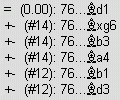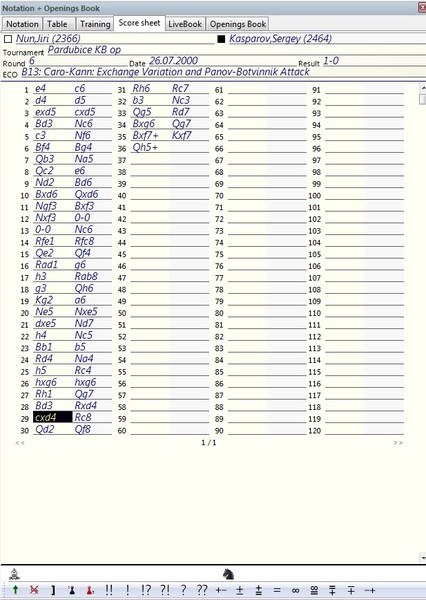

Instead of analyzing forward from the position currently on the board, the database would analyze backward from positions where one player was checkmated or stalemated. In 1965, Richard Bellman proposed the creation of a database to solve chess and checkers endgames using retrograde analysis. However, a more comprehensive solution was needed. Programmers added specific heuristics for the endgame - for example, the king should move to the center of the board. However, even as competent chess programs began to develop, they exhibited a glaring weakness in playing the endgame.
#TABLEBASE ENDGAME ONLINE MANUAL#
In 1951, Alan Turing designed a primitive chess playing program, which assigned values for material and mobility the program "played" chess based on Turing's manual calculations.


Claude Shannon proposed formal criteria for evaluating chess moves in 1949. To reduce the game complexity, researchers have modified these complex games by reducing the size of the board, or the number of pieces, or both.Ĭomputer chess is one of the oldest domains of artificial intelligence, having begun in the early 1930s. Other games, such as chess (from the starting position) and Go, have not been solved because their game complexity is too vast for computers to evaluate all possible positions. Weak solutions exist for somewhat more complex games, such as checkers (with perfect play on both sides the game is known to be a draw, but it is not known for every position created by less-than-perfect play what the perfect next move would be). algorithms that can produce perfect play from any position, are known for some simple games such as Tic Tac Toe (draw with perfect play) and Connect Four (first player wins). Physical limitations of computer hardware aside, in principle it is possible to solve any game under the condition that the complete state is known and there is no random chance. While endgame tablebases for other board games like checkers, chess variants or Nine Men's Morris exist, when a game is not specified, it is assumed to be chess. Tablebases have enhanced competitive play and facilitated the composition of endgame studies. For this reason, they have also called into question the 50 move rule since many positions are now seen to exist that are a win for one side but would be drawn because of the 50 move rule. Some positions which humans had analyzed as draws were proven to be winnable the tablebase analysis could find a mate in more than five hundred moves, far beyond the horizon of humans, and beyond the capability of a computer during play. The solutions have profoundly advanced the chess community's understanding of endgame theory. By August 2012, tablebases had solved chess for every position with up to seven pieces (the positions with a lone king versus a king and five pieces were omitted because they were considered uninteresting). By 2005, all chess positions with up to six pieces (including the two kings) had been solved.

Tablebases are generated by retrograde analysis, working backwards from a checkmated position. Typically the database records each possible position with certain pieces remaining on the board, and the best moves with White to move and with Black to move. Thus, the tablebase acts as an oracle, always providing the optimal moves. The tablebase contains the game-theoretical value (win, loss, or draw) of each possible move in each possible position, and how many moves it would take to achieve that result with perfect play. It is typically used by a computer chess engine during play, or by a human or computer that is retrospectively analysing a game that has already been played. A typical interface for querying a tablebaseĪn endgame tablebase is a computerized database that contains precalculated exhaustive analysis of chess endgame positions.


 0 kommentar(er)
0 kommentar(er)
